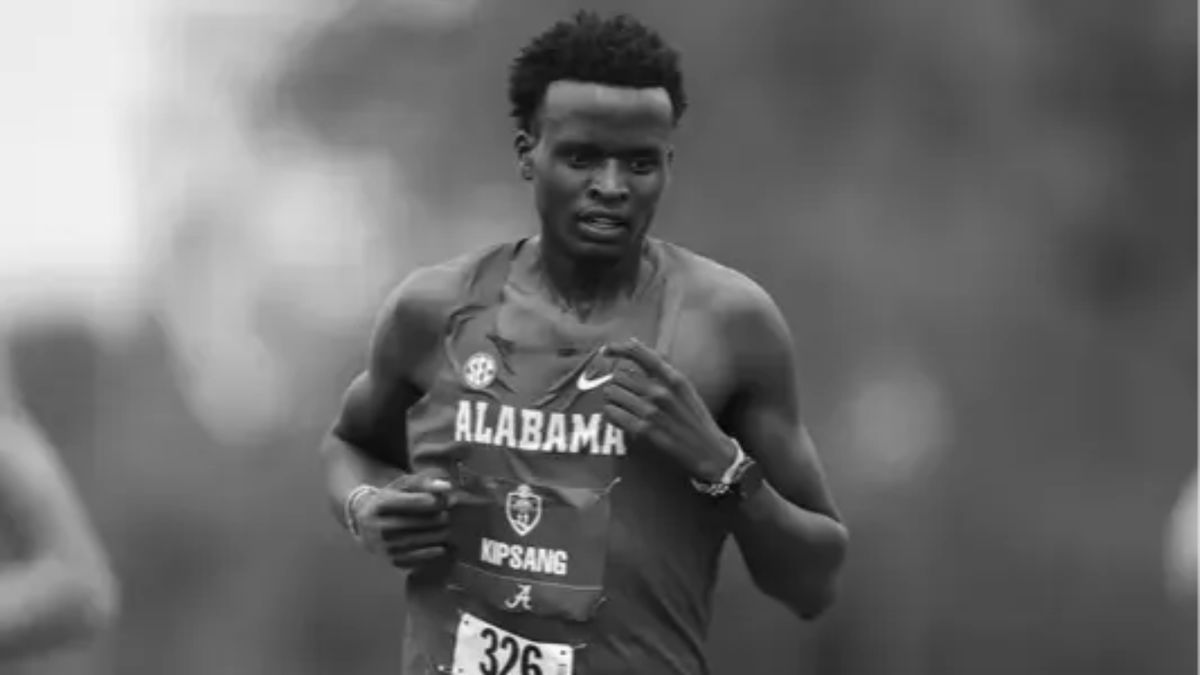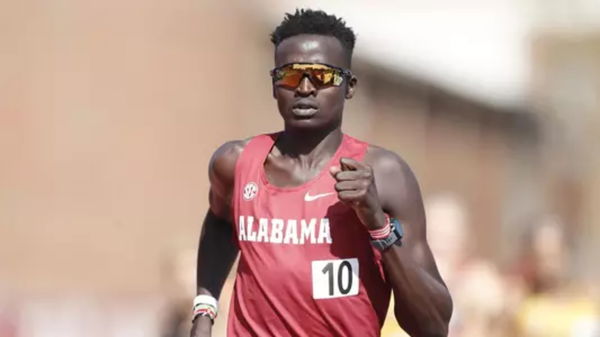

He had the legs to outrun anyone, but not the system that failed to catch him when he fell. Just 28 years old. Crazy talent. A record-breaker in the NCAA, dropping a 3:33.74 in the 1500m back in 2022. Coaches believed in him. Adidas had just signed him. He was the young track and field star from Eldoret, Kenya, who lit up the University of Alabama track, an SEC champ who came this close to the Olympic dream. But on June 6, while chasing that dream in the U.S., he collapsed from sudden cardiac arrest. Four days later, on June 10, he was gone.
Watch What’s Trending Now!
Eliud Kipsang! He was living and training in the U.S. when tragedy struck. On Friday, June 6, he collapsed and was rushed to Good Samaritan Hospital in Puyallup, Washington. According to The Eastleigh Voice, he was admitted to the ICU in critical condition, where he fought for four days before passing away on June 10. The cause? Cardiac arrest. And the cruelest part? He could’ve survived. Even more heartbreaking is that in his final chapter, the very track and field community he represented seemed to let him down.
Well, before his death, GoFundMe was set up to help cover his medical care and bring his body back home to Kenya, but it barely passed $1,260 of its $30,000 goal. For a world-class track and field athlete? That’s not just disappointing, it’s devastating. The fundraiser still reads “29 days until service July 10, 2025.” But Eliud is already gone. This was no ordinary athlete.
ADVERTISEMENT

ADVERTISEMENT
Born in Kapsang, Kenya, Eliud’s rise was steady and earned. A standout from the Africa Championships in 2019, he moved to the U.S., studied public health, and ran for the University of Alabama. He debuted at the SEC Championships and grew into a powerhouse on the NCAA circuit from 2020 to 2023. His defining moment? That 3:33.74 in the 1500m—an NCAA record that held until March 2025. The world noticed. Adidas came knocking. Everything was lining up… until it all came crashing down. And now, beyond the heartbreak, his death raises serious concerns about the rising number of young athletes dying from cardiac arrest and how little is being done to protect them. Remember last year…
ADVERTISEMENT
A global wake-up call for athlete health in track and field
Being young, gifted, and full of promise should mean the world is wide open, but for some rising track and field stars, it’s become heartbreakingly clear that talent isn’t always enough. In September 2024, 23-year-old Nefertari Holston collapsed mid-race at the MGA/Julius Johnson Invitational in Georgia and later died of sudden cardiac arrest. Despite immediate aid and a rush to Atrium Health Navicent, she was pronounced dead that morning. Though the heat that day soared above 90°F, it’s still unclear what role it played in her collapse.
Just months later, 16-year-old Espoir Missite of Maple Grove High School in Minnesota suffered a similar fate while trail running in February 2025. Bystanders attempted CPR, emergency crews arrived promptly, but Espoir tragically did not make it. Investigations into both cases are still ongoing, but one thing is already clear: these were preventable losses that slipped through cracks in athlete care systems.
Top Stories
Tom Brady Makes Career Announcement for Vegas as Pete Carroll Addresses Losing Raiders Locker Room

Cam Newton Makes NFL Return Conditions Clear to 32 Teams as Panthers Legend Confirms Retirement Stance

Dolphins’ Jordyn Brooks Publicly Calls Out Locker Room Over ‘Poor’ Performance Against Steelers

Caitlin Clark Shows Concerning Signs vs. Kelsey Plum During USA Camp Debut, per National Reporter

Scottie Scheffler Makes Critical Health Announcement After He Ended PGA Tour Hiatus

Andy Reid Makes Final Decision on Signing New Chiefs QB After Patrick Mahomes’ ACL Injury

On the other side of the globe, Kenya lost 20-year-old Joseph Hussein Njagi under eerily similar circumstances. On September 27, 2024, after finishing a 3,000-meter scholarship trial at Kipchoge Stadium in Eldoret, Njagi collapsed at the finish line. He was taken to Uasin Gishu District Hospital and declared dead on arrival. His passing sparked outrage and grief in Kenya’s track and field community, reigniting conversations around mandatory pre-race health screenings, the presence of trained medics, and the protocols during high-intensity trials. Njagi wasn’t just running for glory; he was running for opportunity, a chance at something bigger. And yet, even with all his potential, no safety net caught him in time.
ADVERTISEMENT
These passings, so close together in time and circumstance, raise urgent questions about how well we’re protecting young athletes on and off the track. Whether in the U.S. or Kenya, it’s becoming heartbreakingly clear that the systems in place are falling short. Cardiac screenings are often not mandatory, on-site medical teams may be underprepared, and conversations about long-term athlete health only begin after tragedy strikes. How many more stars need to fall before we realize that real investment in athlete safety must match our celebration of their success?
ADVERTISEMENT
ADVERTISEMENT
ADVERTISEMENT

